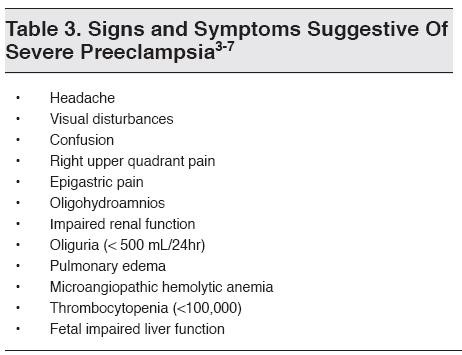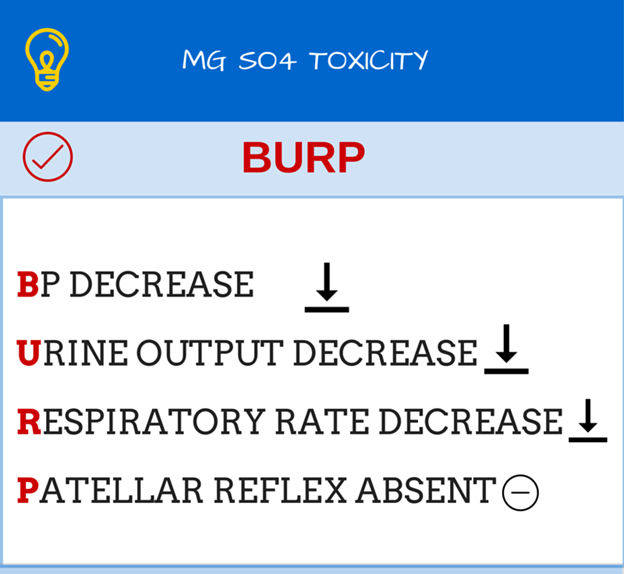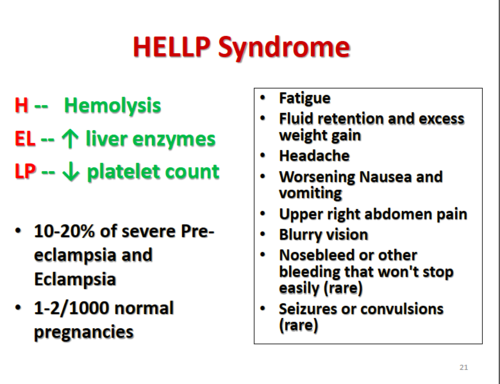(Select all that apply) A nurse is assessing a client who is 32 weeks pregnant and has a diagnosis of severe preeclampsia.
Which of the following findings should the nurse report to the provider immediately?
Epigastric pain
Blurred vision
Facial edema
Hyperreflexia
Oliguria
Correct Answer : A,B,D,E
The correct answer is choice A, B, D and E. These are all signs of severe preeclampsia that indicate organ damage and require immediate medical attention. According to Mayo Clinic, preeclampsia is a complication of pregnancy that causes high blood pressure, protein in the urine, or other signs of organ damage after 20 weeks of gestation.
Choice A is correct because epigastric pain can indicate liver damage or bleeding in the abdomen due to preeclampsia.
Choice B is correct because blurred vision or light sensitivity can indicate brain damage or increased pressure in the skull due to preeclampsia.
Choice C is wrong because facial edema is a common symptom of normal pregnancy and does not necessarily indicate preeclampsia.
Choice D is correct because hyperreflexia can indicate nervous system damage or increased pressure in the skull due to preeclampsia.
Choice E is correct because oliguria can indicate kidney damage or decreased blood flow to the kidneys due to preeclampsia.

Nursing Test Bank
Naxlex Comprehensive Predictor Exams
Related Questions
Correct Answer is A
Explanation
A. Urinary output of 25 mL/hour.This indicates magnesium toxicity and requires immediate intervention because it means the kidneys are not functioning properly and magnesium is not being excreted.Magnesium toxicity can cause life-threatening complications such as respiratory depression, cardiac arrest, and coma.
B. Respiratory rate of 14 breaths/minute is normal and does not indicate magnesium toxicity.A respiratory rate of less than 12 breaths/minute or more than 20 breaths/minute would be abnormal and require further assessment.
C. Deep tendon reflexes 1+ are normal and do not indicate magnesium toxicity.A loss of deep tendon reflexes or clonus would indicate magnesium toxicity and require immediate intervention.
D. Serum magnesium level of 6 mg/dL is within the therapeutic range for preeclampsia and does not indicate magnesium toxicity.
The therapeutic range for preeclampsia is 4 to 7 mg/dL.A serum magnesium level of more than 8 mg/dL would indicate magnesium toxicity and require immediate intervention.

Correct Answer is A
Explanation
This is because HELLP syndrome is a complication of pregnancy that affects the liver and blood clotting.It can cause liver damage, bleeding problems, and high blood pressure.Epigastric pain or right upper quadrant pain is a sign of liver injury or rupture.

Choice B is wrong because blurred vision or flashes of light are symptoms of preeclampsia, not HELLP syndrome.
Preeclampsia is a condition that causes high blood pressure and protein in the urine during pregnancy.It can lead to HELLP syndrome, but not all women with preeclampsia develop HELLP syndrome.
Choice C is wrong because decreased urinary output or oliguria are also symptoms of preeclampsia, not HELLP syndrome.
Oliguria means producing less than 400 mL of urine in 24 hours.It can indicate kidney damage or failure due to high blood pressure or proteinuria.
Choice D is wrong because hyperreflexia or clonus are also symptoms of preeclampsia, not HELLP syndrome.
Hyperreflexia means having exaggerated reflexes, while clonus means having involuntary muscle spasms.
They can indicate nervous system involvement or seizures due to high
Whether you are a student looking to ace your exams or a practicing nurse seeking to enhance your expertise , our nursing education contents will empower you with the confidence and competence to make a difference in the lives of patients and become a respected leader in the healthcare field.
Visit Naxlex, invest in your future and unlock endless possibilities with our unparalleled nursing education contents today
Report Wrong Answer on the Current Question
Do you disagree with the answer? If yes, what is your expected answer? Explain.
Kindly be descriptive with the issue you are facing.
